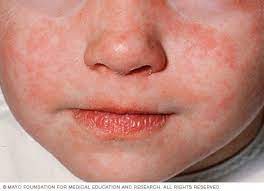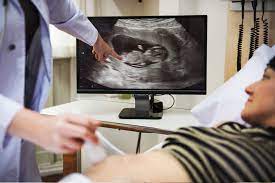Situation at a glance
Description of the situation
Since the last Disease Outbreak News on this event was published on 11 October 2024, four additional laboratory-confirmed cases of Marburg virus disease (MVD) have been reported in Rwanda. As of 17 October 2024, a total of 62 cases, including 15 deaths (CFR: 24.2%), have been reported. Most of the cases have been reported from the three districts in Kigali city.
Since the declaration of the outbreak on 27 September and as of 17 October, 43 confirmed cases have recovered, the remaining four cases are under care at the designated Marburg treatment center. Health workers from two health facilities in Kigali account for over 80% of confirmed cases. All new confirmed cases reported within the past week, have been associated with the two hospital clusters in Kigali. As of 17 October 2024, a total of 4486 tests for Marburg virus have been conducted, with approximately 200-300 samples being tested daily at the Rwanda Biomedical Center.
Contact tracing is underway, with over 800 contacts under follow-up as of 14 October 2024. Both contacts who travelled internationally, to Belgium and Germany, have completed the 21 days follow-up period and no longer pose a public health risk.
The source of the outbreak is still under investigation and additional information will be provided when available.
Epidemiology
MVD is a highly virulent disease that can cause haemorrhagic fever and is clinically similar to Ebola virus disease. Marburg and Ebola viruses are both members of the Filoviridae family (filovirus). People are infected with Marburg virus when they come into close contact with Rousettus bats, a type of fruit bat, that can carry the Marburg virus and are often found in mines or caves. Marburg virus then spreads between people via direct contact (through broken skin or mucous membranes) with the blood, secretions, organs or other bodily fluids of infected people, and with surfaces and materials (e.g. bedding, clothing) contaminated with these fluids. Health workers have previously been infected while treating patients with suspected or confirmed MVD. Burial ceremonies that involve direct contact with the body of the deceased can also contribute to the transmission of Marburg virus.
The incubation period varies from two to 21 days. Illness caused by Marburg virus begins abruptly, with high fever, severe headache and severe malaise. Severe watery diarrhoea, abdominal pain and cramping, nausea and vomiting can begin on the third day. Although not all cases present with haemorrhagic signs, severe haemorrhagic manifestations may appear between five and seven days from symptoms onset, and fatal cases usually have some form of bleeding, often from multiple areas. In fatal cases, death occurs most often between eight and nine days after symptom onset, usually preceded by severe blood loss and shock. There is currently no approved treatment or vaccine for MVD. Some candidate vaccines and therapeutics are currently under investigation.
Seventeen outbreaks of MVD have previously been reported globally. The most recent outbreaks were reported in Equatorial Guinea and the United Republic of Tanzania between February and June 2023. Additional countries that previously reported outbreaks of MVD in the African Region include Angola, the Democratic Republic of the Congo, Ghana, Guinea, Kenya, South Africa, and Uganda.
Public health response
- The Government of Rwanda is coordinating the response with support from WHO and partners.
- A surge team from WHO was deployed to support the in-country response across the functions of incident management, epidemiology, health operations, case management, infection prevention and control, health logistics, therapeutics and vaccines research, and partner coordination.
- WHO engaged with its collaborating centers and other reference laboratories and partners to support Rwanda in assessing test performance.
- Given the increasing number of survivors, WHO is supporting the Government in the establishment of a programme for survivors, by sharing technical guidance and protocols for the establishment of a national programme.
- WHO, the Government of Rwanda, and partners have launched Marburg therapeutics clinical trials.
- WHO and partners supported the Ministry of Health (MOH) in developing and finalising the national Infection Prevention and Control (IPC) operational guidance for MVD adopted/adapted from WHO-IPC guideline. This operational guidance together with IPC standard operating procedures will be rapidly disseminated to all health facilities.
- WHO supplied 12 000 personal protective equipment (PPE) which is sufficient to run a 50-bed treatment center for 30 days.
- As part of ongoing efforts to strengthen IPC, a Joint WHO and MOH IPC team has trained 520 healthcare workers on IPC measures.
- WHO has provided technical advice to public health authorities in Rwanda and at-risk countries on the implementation of evidence-informed and risk-based health measures; the strengthening of detection, reporting and management capacities at points of entry and across borders; and travel advice.
- WHO has published interim guidance on the Considerations for border health and points of entry for filovirus disease outbreaks, which applies to but is not limited to the current MVD outbreak in Rwanda.
- WHO has also published a statement advising against any travel restrictions and against any trade restrictions with Rwanda in the context of the ongoing MVD outbreak.
- WHO is providing support in surrounding countries to assess the readiness of healthcare facilities, points of entry and border communities within surrounding countries and specifically risk mapping for areas bordering Rwanda.
WHO risk assessment
Marburg virus disease (MVD) is caused by the same family of viruses (Filoviridae) that causes Ebola virus disease. MVD is an epidemic-prone disease associated with high CFR (24-88%). In the early course of the disease, MVD is challenging to distinguish from other infectious diseases such as malaria, typhoid fever, shigellosis, meningitis and other viral haemorrhagic fevers. Epidemiologic features can help differentiate between viral hemorrhagic fevers (including history of exposure to bats, caves, or mining) and laboratory testing is important to confirm the diagnosis.
With 62 confirmed cases reported, this is the third largest MVD outbreak reported, with the majority of confirmed cases reported among healthcare workers. Healthcare-associated infections (also known as nosocomial infections) of this disease can lead to further spread if not controlled early. The importance of screening all persons entering health facilities as well as inpatient surveillance for prompt identification, isolation, and notification cannot be overemphasized. This is in addition to the importance of contact identification and monitoring of all probable and confirmed cases. The source of the outbreak, the likely date of onset of the first case and additional epidemiological information on cases are still pending further outbreak investigation.
On 30 September WHO assessed the risk of this outbreak as very high at the national level, high at the regional level, and low at the global level. However, based on the evolution of the outbreak and ongoing investigations, this risk assessment may be revised. MVD is not easily transmissible (i.e. in most instances it requires contact with the body fluids of a sick patient presenting with symptoms or with surfaces contaminated with these fluids). In addition, there are ongoing public health measures in place, including active surveillance in facilities and communities, testing suspected cases, isolation and treatment of cases and contact tracing.
WHO advice
MVD outbreak control relies on using a range of interventions, including prompt isolation and case management; surveillance including active case search, case investigation and contact tracing; a laboratory service; infection prevention and control, including prompt safe and dignified burial; and social mobilization – community engagement is key to successfully controlling MVD outbreaks. Raising awareness of risk factors for Marburg virus infection and protective measures that individuals can take is an effective way to reduce human transmission. WHO advises the following risk reduction measures as an effective way to reduce MVD transmission in healthcare facilities and in communities:
- To reduce human infections and deaths, it is essential to raise community awareness about the risk factors for Marburg virus infection particularly of human-to-human transmission, and the protective measures individuals can take to minimize exposure to the virus. This includes encouraging anyone with symptoms to seek immediate care at a health facility or designated treatment center to lower the risk of community transmission and improve their chances for recovery.
- Surveillance activities, including the wide dissemination of the MVD case definition, should be strengthened in all affected districts, including contact tracing and active case finding.
- Critical infection prevention and control measures should be implemented and/or strengthened in all health care facilities, per WHO’s Infection prevention and control guideline for Ebola and Marburg disease. Health workers caring for patients with confirmed or suspected MVD should apply Transmission-based precautions in addition to: Standard precautions, including appropriate use of PPE and hand hygiene according to the WHO 5 moments to avoid contact with patient’s blood and other body fluids and with contaminated surfaces and objects
- A comprehensive strategy to manage deceased individuals in communities should be implemented in communities. Safe and dignified burials should be carried out, with strong engagement communities.
- Rapid qualitative assessments should be implemented to collect socio-behavioural data, which can then be utilized to guide the response.
- Timely laboratory testing of all suspected cases needs to be maintained and supported with a reliable sample transportation system.
- Border health readiness and response capacities should be strengthened at points of entry and in communities bordering areas reporting MVD cases and onboard conveyances, and public health advice should be provided to travellers in line with WHO’s interim guidance on considerations for border health and points of entry for filovirus disease outbreaks.
- WHO encourages all countries to send the first samples that tested positive for Marburg virus and a subset of negative samples to a WHO Collaborating Centre or a regional reference laboratory for inter-laboratory comparison.
- WHO recommends that clinical data from suspected and confirmed Marburg virus disease cases be systematically collected to improve the limited understanding of the clinical course and direct causes and risk factors for poor outcomes. This can be done by contributing anonymized data to the WHO Global Clinical Platform for viral haemorrhagic fevers.
Based on the current risk assessment, WHO advises against any travel restrictions and against any trade restrictions with Rwanda. For further information, please see WHO advice for international traffic in relation to the Marburg virus disease outbreak in Rwanda.
Further information
-
- Marburg virus disease outbreak – Rwanda 2024. Available at: https://www.who.int/emergencies/situations/mvd-rwanda-2024
- Official X account of the Ministry of Health, Government of Rwanda. Available at https://x.com/RwandaHealth
- Rwanda Ministry of Health Press release on Marburg Virus Diseases, 27 September 2024. Available at https://x.com/RwandaHealth/status/1839656238105104424
- Rwanda Ministry of Health update as of 10 October 2024. https://x.com/rwandahealth/status/1844442261884633335?s=46&t=Zs9r4qLV11Kik8uH352r0A
- WHO press release on announcement by Rwanda, 28 September 2024. Available at: https://www.afro.who.int/countries/rwanda/news/rwanda-reports-first-ever-marburg-virus-disease-outbreak-26-cases-confirmed
- Marburg virus disease global strategic preparedness and response plan for Rwanda. Available at: https://www.who.int/publications/m/item/marburg-virus-disease-global-strategic-preparedness-and-response-plan-for-rwanda
- WHO appeal: Marburg virus disease outbreak Rwanda 2024. Available at: https://www.who.int/publications/m/item/who-appeal–marburg-virus-disease-outbreak-rwanda-2024
- WHO factsheet – Marburg virus disease. Available at: https://www.who.int/news-room/fact-sheets/detail/marburg-virus-disease
- WHO questions and answers – Marburg virus disease. Available at: https://www.who.int/news-room/questions-and-answers/item/marburg-virus-disease
- Weekly operational update on response to Marburg virus disease in Rwanda. Available at: https://www.afro.who.int/countries/rwanda/publication/weekly-operational-update-response-marburg-virus-disease-rwanda
- WHO advises against any travel and trade restrictions with Rwanda in the context of the ongoing Marburg virus disease (MVD) outbreak. Available at: https://www.who.int/news-room/articles-detail/who-advises-against-any-travel-and-trade-restrictions-with-rwanda-in-the-context-of-the-ongoing-marburg-virus-disease-(mvd)-outbreak
- Considerations for border health and points of entry for filovirus disease outbreaks. Available at: https://www.who.int/publications/m/item/considerations-for-border-health-and-points-of-entry-for-filovirus-disease-outbreaks
- Syndromic entry and exit screening for epidemic-prone diseases of travellers at ground crossings. Available at: https://www.who.int/publications/i/item/9789240090309
- Infection prevention and control guidelines for Ebola and Marburg disease, August 2023. Available at: https://www.who.int/publications/i/item/WHO-WPE-CRS-HCR-2023.1
- Standard precautions for the prevention and control of infections: aide-memoire. Available at: https://www.who.int/publications/i/item/WHO-UHL-IHS-IPC-2022.1
- Transmission-based precautions for the prevention and control of infections: aide-memoire. Available at: https://www.who.int/publications/i/item/WHO-UHL-IHS-IPC-2022.2
- Steps to putting on PPE for Ebola/Marburg coverall. Available at: https://www.who.int/multi-media/details/steps-to-put-on-ppe-for-ebola-marburg-disease-coverall
- Steps to removing PPE for Ebola/Marburg disease coverall. Available at https://www.who.int/multi-media/details/steps-to-remove-ppe-for-ebola-marburg-disease-coverall
- Steps to putting on PPE for Ebola/Marburg gown and headcover. Available at: https://www.who.int/multi-media/details/steps-to-put-on-ppe-for-ebola-marburg-disease-gown-and-headcover
- Steps to removing PPE for Ebola/Marburg gown and headcover. Available at: https://www.who.int/multi-media/details/steps-to-remove-ppe-for-ebola-marburg-disease-gown-and-headcover
- Essential environmental health standards in healthcare facilities. Available at: https://www.who.int/publications/i/item/9789241547239
- WASH FIT implementation for WASH improvements in healthcare facilities. Available at: WASH FIT Fact Sheets | WASH in Health Care Facilities (washinhcf.org) https://www.washinhcf.org/wash-fit-fact-sheets/
- World Health Organization (March 2009). Hand hygiene technical reference manual: to be used by health-care workers, trainers and observers of hand hygiene practices. Available at https://www.who.int/publications/i/item/9789241598606
- Ebola and Marburg diseases screening and treatment center design training. Available at: https://openwho.org/courses/ebola-marburg-screen-treat-facilities
- World Health Organization (2 June 2023). Disease Outbreak News; Marburg virus disease in the United Republic of Tanzania. Available at https://www.who.int/emergencies/disease-outbreak-news/item/2023-DON471
- Markotter W, Coertse J, DeVries M, et al. Bat-borne viruses in Africa: a critical review. J of Zoology. 2020;311:77-98. doi:10.1111/jzo.12769. https://zslpublications.onlinelibrary.wiley.com/doi/10.1111/jzo.12769(link is external)
- Korine C Rousettus aegyptiacus. The IUCN Red List of Threatened Species 2016: e.T29730A22043105. https://www.iucnredlist.org/species/29730/22043105
- Cross RW, Longini IM, Becker S, Bok K, Boucher D, Carroll MW, et al. (2022) An introduction to the Marburg virus vaccine consortium, MARVAC. PLoS Pathog 18(10): e1010805. https://doi.org/10.1371/journal.ppat.1010805
- A WHO-Strategic Research Agenda for Filovirus Research and Monitoring (WHO-AFIRM). Available at: https://www.who.int/publications/m/item/a-who-strategic-research-agenda-for-filovirus-research-and-monitoring—–(who-afirm)
- Building research readiness for a future filovirus outbreak, Workshop February 20 – 22, 2024, Uganda. Available at: https://www.who.int/news-room/events/detail/2024/02/20/default-calendar/building-research-readiness-for-a-future-filovirus-outbreak-workshop-february-20-22-2024-uganda
- WHO Technical Advisory Group – candidate vaccine prioritization. Summary of the evaluations and recommendations on the four Marburg vaccines. Available at: https://www.who.int/publications/m/item/who-technical-advisory-group—candidate-vaccine-prioritization.–summary-of-the-evaluations-and-recommendations-on-the-four-marburg-vaccines
- Marburg virus vaccine landscape. Available at: https://www.who.int/publications/m/item/marburg-virus-vaccine-landscape
- Marburg virus therapeutics landscape. Available at: https://www.who.int/publications/m/item/marburg-virus-therapeutics-landscape
Citable reference: World Health Organization (18 October 2024). Disease Outbreak News; Marburg virus disease in Rwanda. Available at: https://www.who.int/emergencies/disease-outbreak-news/item/2024-DON540











